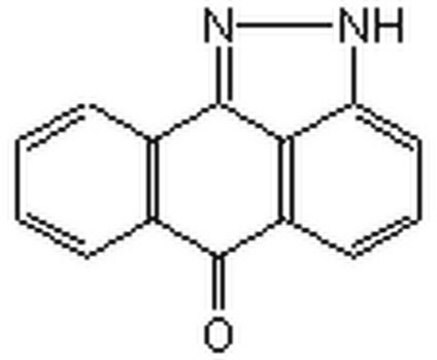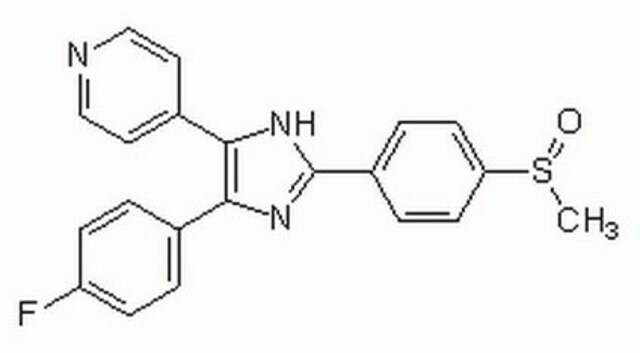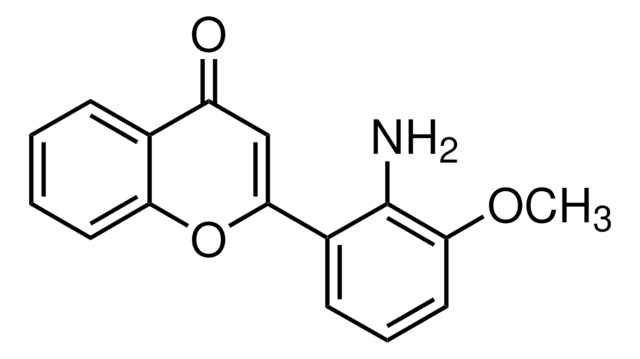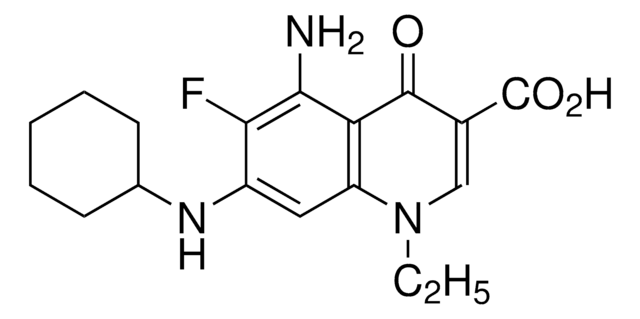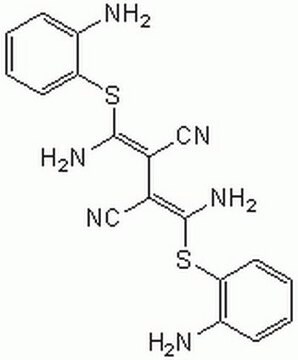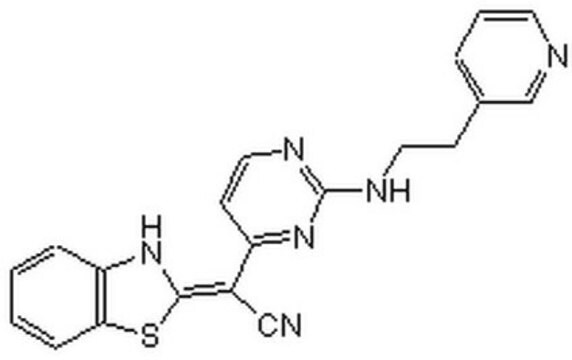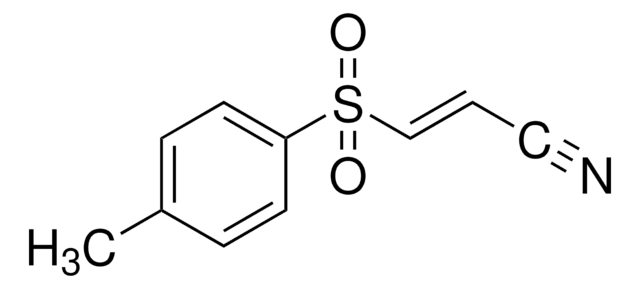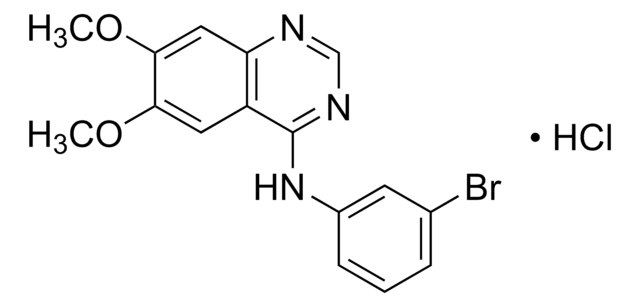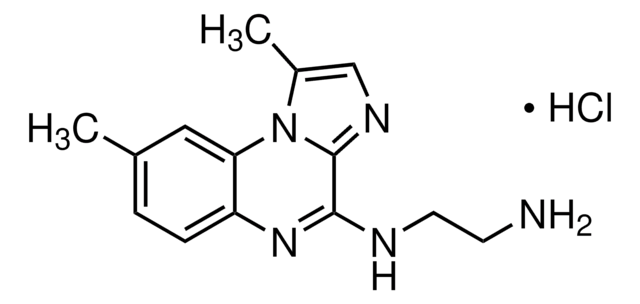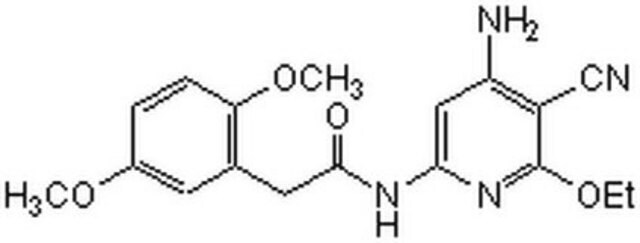S5567
SP600125
≥98% (HPLC), powder or solid, JNK inhibitor
Sinonimo/i:
1,9-Pyrazoloanthrone, Anthrapyrazolone
About This Item
Prodotti consigliati
product name
SP600125, ≥98% (HPLC)
Livello qualitativo
Saggio
≥98% (HPLC)
Colore
yellow
Solubilità
DMSO: 20 mg/ml, clear to very slightly hazy, faintly yellow to yellow
H2O: insoluble
Temperatura di conservazione
2-8°C
Stringa SMILE
O=C1c2ccccc2-c3n[nH]c4cccc1c34
InChI
1S/C14H8N2O/c17-14-9-5-2-1-4-8(9)13-12-10(14)6-3-7-11(12)15-16-13/h1-7H,(H,15,16)
ACPOUJIDANTYHO-UHFFFAOYSA-N
Informazioni sul gene
human ... JUN(3725) , MAPK10(5602) , MAPK9(5601)
Applicazioni
Azioni biochim/fisiol
Codice della classe di stoccaggio
11 - Combustible Solids
Classe di pericolosità dell'acqua (WGK)
WGK 3
Punto d’infiammabilità (°F)
Not applicable
Punto d’infiammabilità (°C)
Not applicable
Dispositivi di protezione individuale
dust mask type N95 (US), Eyeshields, Gloves
Certificati d'analisi (COA)
Cerca il Certificati d'analisi (COA) digitando il numero di lotto/batch corrispondente. I numeri di lotto o di batch sono stampati sull'etichetta dei prodotti dopo la parola ‘Lotto’ o ‘Batch’.
Possiedi già questo prodotto?
I documenti relativi ai prodotti acquistati recentemente sono disponibili nell’Archivio dei documenti.
I clienti hanno visto anche
Articoli
Naive pluripotent stem cells are located within the epiblast of mature blastocysts. These primitive “ground-state” cells may be cultured in vitro using specialized media and small molecule inhibitors.
Il team dei nostri ricercatori vanta grande esperienza in tutte le aree della ricerca quali Life Science, scienza dei materiali, sintesi chimica, cromatografia, discipline analitiche, ecc..
Contatta l'Assistenza Tecnica.